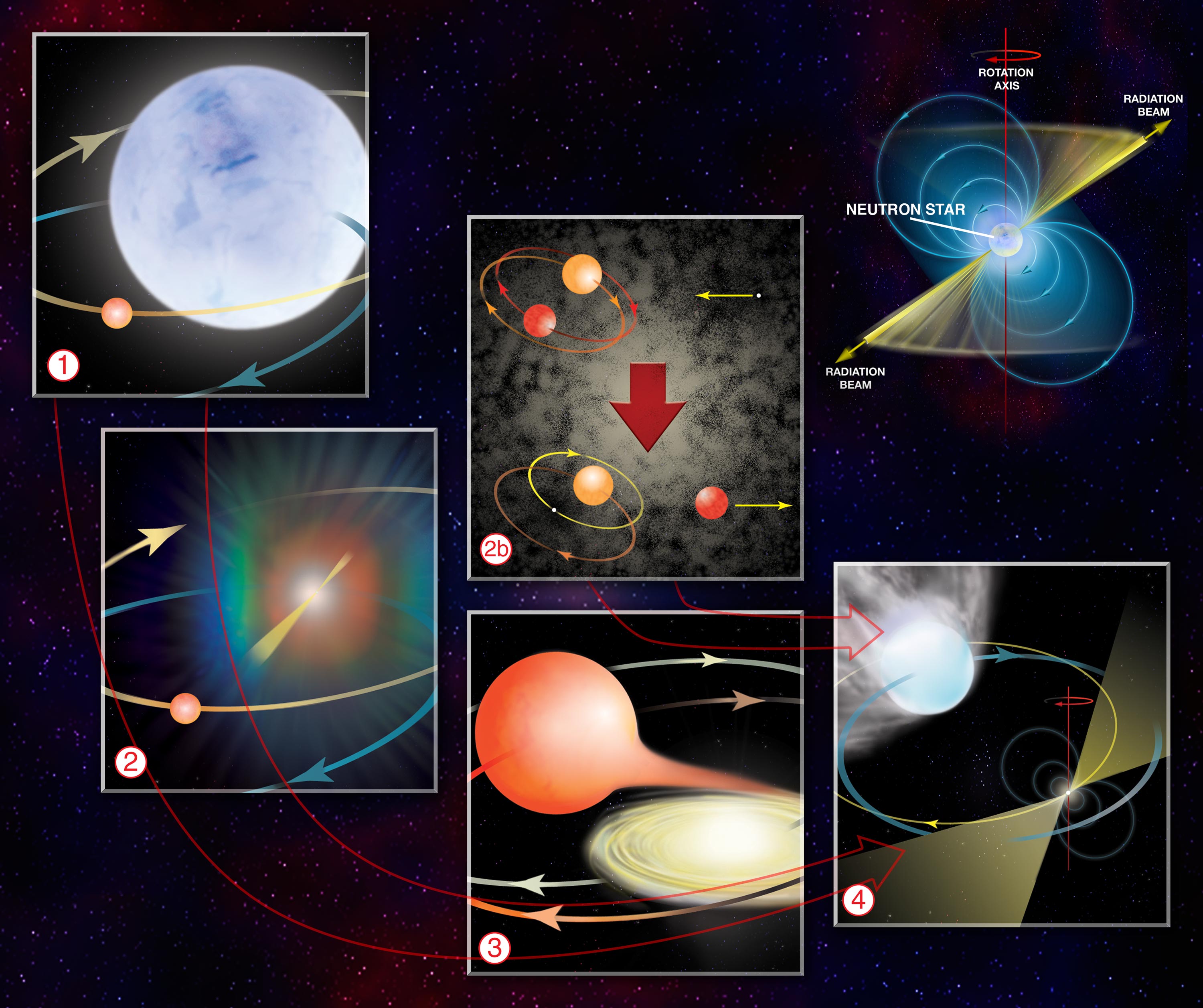|
PSR J1719−1438
PSR J1719-1438 is a millisecond pulsar with a spin period of 5.8 ms located about 4,000 ly from Earth in the direction of Serpens Cauda, one minute from the border with Ophiuchus. Millisecond pulsars are generally thought to begin as normal pulsars and then spin up by accreting matter from a binary companion. Diamond planet PSR J1719-1438 was discovered in (2011) by the High Time Resolution Survey, a radio astronomy search for astronomical objects that rapidly vary in radio brightness, such as pulsars. Timing measurements using the Parkes Telescope and Lovell Telescope showed that it has a low-mass companion: PSR J1719-1438 b. The companion has a mass similar to that of Jupiter, but 40% of the diameter. It orbits the pulsar with a period of 2 hours 10 minutes and 37 seconds, at a distance of around 600,000 km (0.89 solar radii). The companion is likely the remnant of a star whose outer layers were siphoned off by the more massive pulsar. Calculations show the ... [...More Info...] [...Related Items...] OR: [Wikipedia] [Google] [Baidu] |
Julian Day
The Julian day is a continuous count of days from the beginning of the Julian period; it is used primarily by astronomers, and in software for easily calculating elapsed days between two events (e.g., food production date and sell by date). The Julian period is a chronological interval of 7980 years, derived from three multi-year cycles: the Indiction, Solar, and Lunar cycles. The last year that was simultaneously the beginning of all three cycles was , so that is year 1 of the current Julian period, making AD year of that Period. The next Julian Period begins in the year AD 3268. Historians used the period to identify Julian calendar years within which an event occurred when no such year was given in the historical record, or when the year given by previous historians was incorrect. The Julian day number (JDN) has the same epoch as the Julian period, but counts the number of days since the epoch rather than the number of years since then. Specifically, ... [...More Info...] [...Related Items...] OR: [Wikipedia] [Google] [Baidu] |
Parkes Telescope
Parkes Observatory is a radio astronomy observatory, located north of the town of Parkes, New South Wales, Australia. It hosts Murriyang, the 64 m CSIRO Parkes Radio Telescope also known as "The Dish", along with two smaller radio telescopes. The 64 m dish was one of several radio antennae used to receive live television images of the Apollo 11 Moon landing. Its scientific contributions over the decades led the ABC to describe it as "the most successful scientific instrument ever built in Australia" after 40 years of operation. The Parkes Observatory is run by the Commonwealth Scientific and Industrial Research Organisation (CSIRO), as part of the Australia Telescope National Facility (ATNF) network of radio telescopes. It is frequently operated together with other CSIRO radio telescopes, principally the array of six dishes at the Australia Telescope Compact Array near Narrabri, and a single dish at Mopra (near Coonabarabran), to form a very long baseline interferometry ar ... [...More Info...] [...Related Items...] OR: [Wikipedia] [Google] [Baidu] |
Millisecond Pulsars
A millisecond pulsar (MSP) is a pulsar with a rotational period less than about 10 milliseconds. Millisecond pulsars have been detected in radio pulsar, radio, X-ray pulsar, X-ray, and gamma ray portions of the electromagnetic spectrum. The leading hypothesis for the origin of millisecond pulsars is that they are old, rapidly rotating neutron stars that have been spun up or "recycled" through Accretion (astrophysics), accretion of matter from a companion star in a close binary system. For this reason, millisecond pulsars are sometimes called recycled pulsars. Origins Millisecond pulsars are thought to be related to low-mass X-ray binary systems. It is thought that the X-rays in these systems are emitted by the accretion disk of a neutron star produced by the outer layers of a companion star that has overflowed its Roche lobe. The transfer of angular momentum from this accretion event can increase the rotation rate of the pulsar to hundreds of times per second, as is observed in mi ... [...More Info...] [...Related Items...] OR: [Wikipedia] [Google] [Baidu] |
Astronomical Objects Discovered In 2011
Astronomy is a natural science that studies celestial objects and the phenomena that occur in the cosmos. It uses mathematics, physics, and chemistry in order to explain their origin and their overall evolution. Objects of interest include planets, moons, stars, nebulae, galaxies, meteoroids, asteroids, and comets. Relevant phenomena include supernova explosions, gamma ray bursts, quasars, blazars, pulsars, and cosmic microwave background radiation. More generally, astronomy studies everything that originates beyond Earth's atmosphere. Cosmology is a branch of astronomy that studies the universe as a whole. Astronomy is one of the oldest natural sciences. The early civilizations in recorded history made methodical observations of the night sky. These include the Egyptians, Babylonians, Greeks, Indians, Chinese, Maya, and many ancient indigenous peoples of the Americas. In the past, astronomy included disciplines as diverse as astrometry, celestial navigation, observational a ... [...More Info...] [...Related Items...] OR: [Wikipedia] [Google] [Baidu] |



